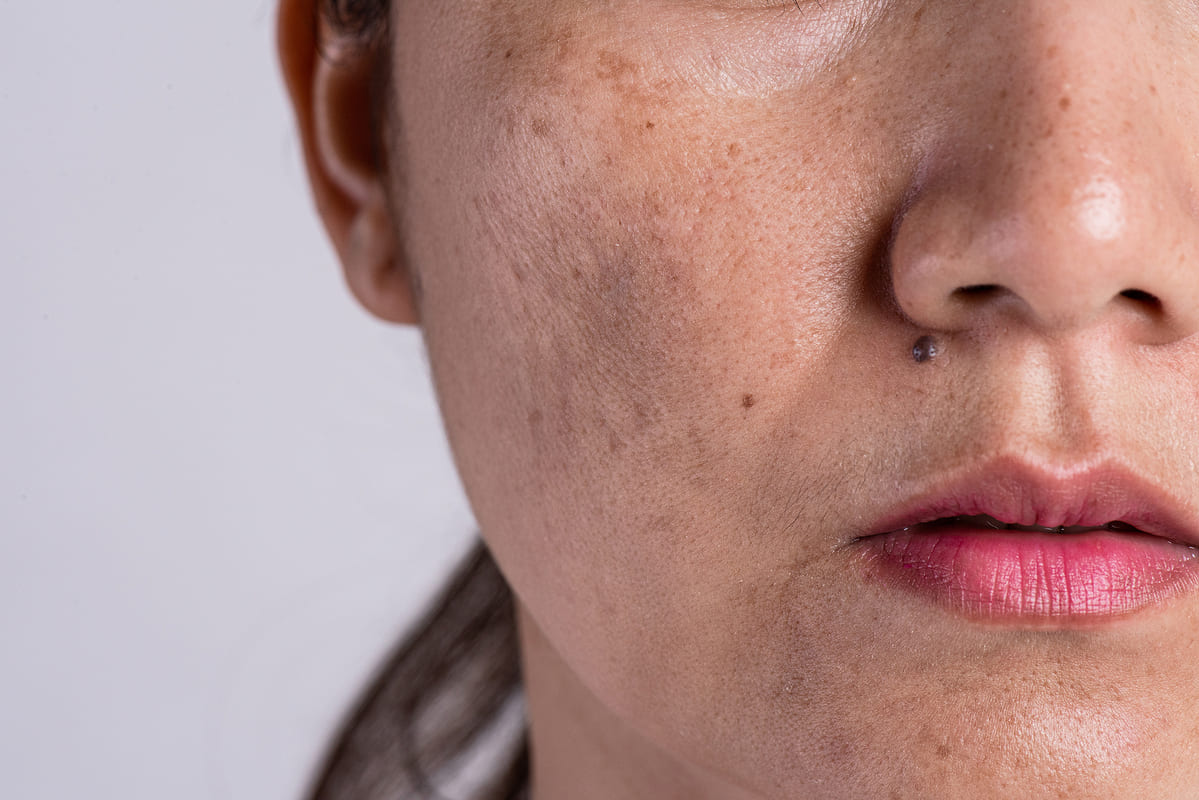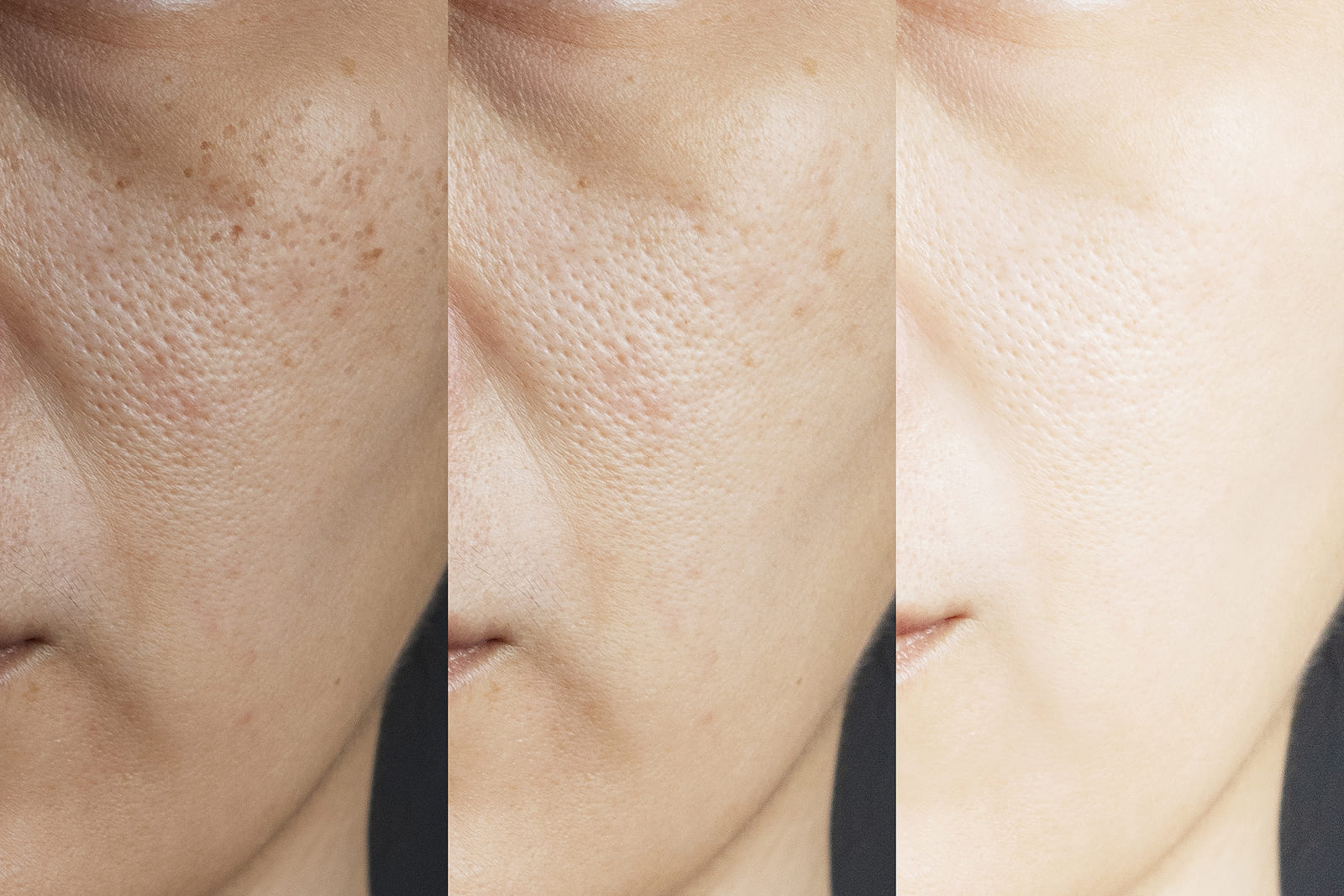Melasma

Melasma is a common skin condition characterized by dark patches on the face, typically on the cheeks, forehead, nose, and upper lip. It’s more prevalent in women and often triggered by hormonal changes, sun exposure, or genetic predisposition.
Causes and Risk Factors:
Hormonal changes (such as pregnancy or birth control pills), sun exposure, genetics, and certain medications can contribute to melasma development.
Symptoms:
Melasma presents as symmetrical, brown or gray-brown patches on the face, commonly on sun-exposed areas. These patches may vary in size and shape.



